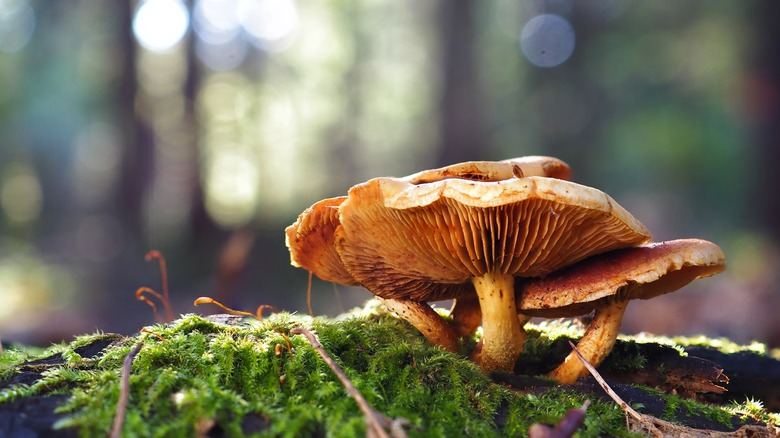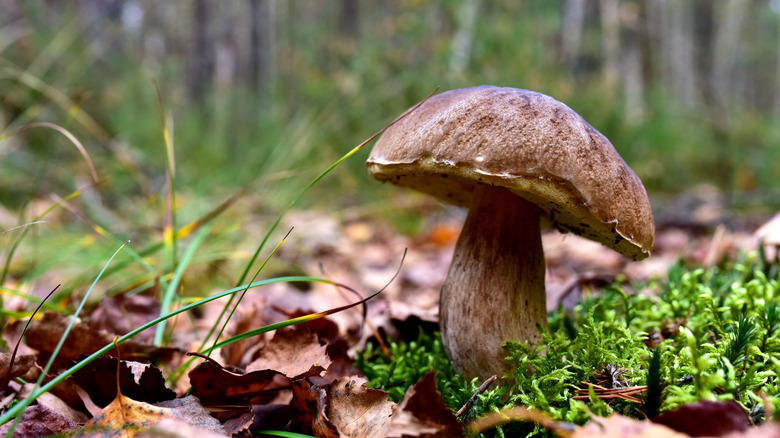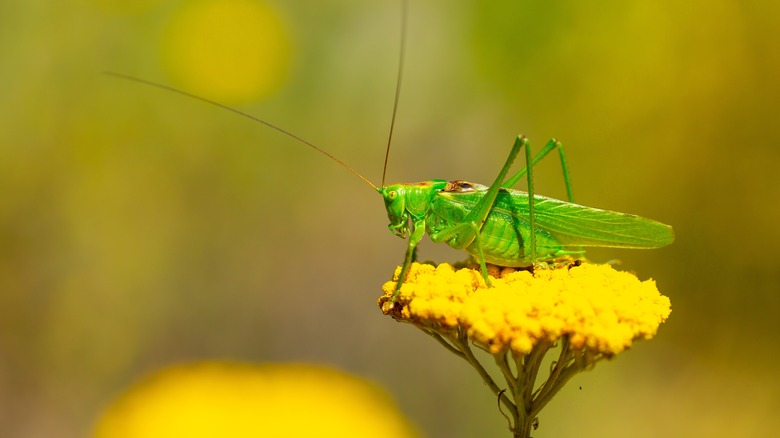Why Mushrooms Are The Last Thing You Should Eat Off The Trail (Even In Emergencies)
Mushrooms are delicious little fungi that go well with everything from steak and pizza to creamy curries and vegetable stir-fries. However, while they may be great tasting and nutritious at home, the one time you should never eat mushrooms is out in the wild, even in an emergency. The reason for this is that it is difficult to tell which mushrooms are safe and which are dangerous because many edible wild mushrooms have poisonous look-alikes — like the tasty Chanterelle and the poisonous Jack O' Lantern or the delicious morel versus the poisonous false morel. Unless you are an experienced mushroom forager, it's a good idea to avoid eating wild mushrooms because the risk is much higher than the reward.
In fact, choosing the wrong mushroom can be deadly, as noted by Philadelphia Poison Control Center toxicologist Robert Basset in an interview with CBS, "Certain mushrooms can cause seizures ... and the ones that are most feared from a physician's standpoint are the ones that cause organ failure." On top of this, even common folklore about mushrooms that is meant to help you easily find the edible ones can lead you astray. According to the University of Kentucky, the common myth that all white mushrooms are safe to eat is completely false, as can be seen with the super poisonous but innocent-looking white amanita mushroom which can cause coma and sometimes death.
Even experts should avoid wild mushrooms in emergencies
So, to be safe, you should avoid wild mushrooms at all costs, especially in a situation where getting ill can affect your chances of survival. Even if you are an expert mushroom forager who knows how to differentiate and identify mushrooms, it can still be a good idea to avoid eating them in an emergency. The main reason for this is that being hungry can negatively affect your decision-making and judgment. This can lead to simple mistakes which can be deadly with mushrooms. On top of this, according to Poison Control, if you are in a different region (and especially if you are in a different country), your mushroom knowledge of another region won't translate and it will be easier to be fooled by previously unencountered look-alikes.
Furthermore, even if you are an experienced forager who is 100% sure that a mushroom is edible, it still may not be the best choice of sustenance. The reason for this is that mushrooms contain nutrients that stimulate the metabolism and help burn calories and lose weight. This makes mushrooms a great diet food but a less-than-stellar survival food.
What you should eat instead
Luckily, there are plenty of other options for things you can eat off the trail that will be much safer and better for you than wild mushrooms. Forests in the United States are full of common plants that are both edible and easy to identify. For example, dandelions (the flowers and leaves) are edible and are a great source of minerals like calcium, iron, and potassium as well as vitamin C. Other nutritious and easy-to-find edible plants include clover, cattails, evergreen trees including pines and spruces, all species of grasses (as long as there are no purple spots), honeysuckle, wild roses, and violets. You can also go for easy-to-identify wild berries like blueberries, mulberries, raspberries, and blackberries.
For protein, you can try your hand at hunting or trapping small forest critters or fish, but this will take time and energy you may not want to use. Instead, while a little unpleasant, you can try eating certain species of edible insects that are packed full of protein and nutrients. Some insects that are good options for sustenance include ants, grubs, grasshoppers, and crickets.


